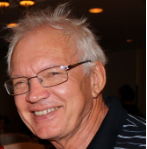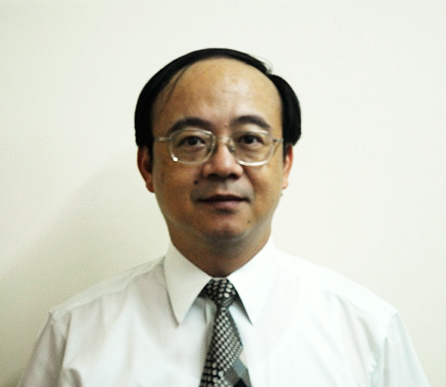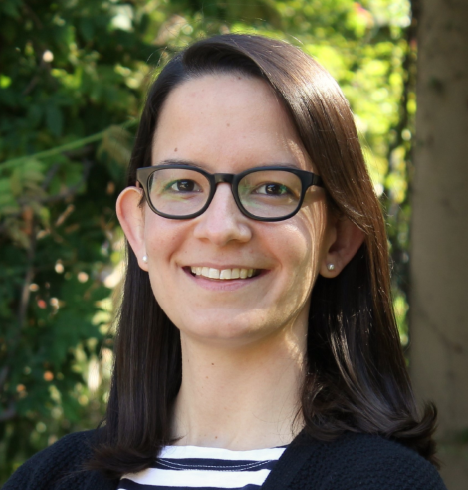
Invited Lectures
Plenary Lectures
-
 Prof. Holger Babinsky Aerodynamics, Engineering Department, University of Cambridge, UK
Prof. Holger Babinsky Aerodynamics, Engineering Department, University of Cambridge, UKTitle Corner effects in shock-wave/boundary-layer interactions
Corner effects in shock-wave/boundary-layer interactions
Prof. Holger Babinsky
Aerodynamics, Engineering Department, University of Cambridge, UK
The interaction of a shock wave with a turbulent boundary layer (shock-wave/boundary-layer interaction SBLI) is one of the fundamental building blocks of compressible flow. It is particularly important to understand under what circumstances a shock wave causes flow separation and how the overall flow is affected by the shape and location of such separations. Separated SBLI flows are also prone to unsteadiness which can introduce additional adverse effects on a flowfield.
Many flows of practical interest feature streamwise corners formed by the intersections of bounding surfaces (e.g. floors/side-walls or wing-body junctions). The viscous flow in these corner regions is often more susceptible to separation than the ‘main’ flow away from these areas.
In this presentation I will demonstrate that shock-induced flow separation in corners can have more than just a local effect. I will describe the influence of corner separations on three well-known canonical and quasi-2D SBLIs, namely the normal shock, oblique shock reflection and compression corner. In each case the main influence of corner separations is transmitted to the main flow through corner ‘waves’ which can be compressions (or shocks) and expansions. By understanding the influence of these waves on the main interaction, it is possible to explain differences in separation onset and topology. Recent experiments have also begun to explore the effect of corner separations on SBLI unsteadiness and some early results will be reported.Holger Babinsky studied Aerospace Engineering at Stuttgart University in Germany. He obtained a PhD in hypersonic aerodynamics from Cranfield University (UK) in 1994. After 18 months as Research Associate at the Shock Wave Research Centre of Tohoku University in Sendai, Japan he returned to the UK to take up a position in the Department of Engineering of the University of Cambridge. He is now Head of Fluid Mechanics, Energy and Turbomachinery as well as a Fellow of Magdalene College. His main areas of research are in the field of experimental aerodynamics and associated measurement techniques. Apart from shock wave/boundary layer interactions which he has studied for more than 30 years his current research includes the unsteady aerodynamics of micro-air vehicles, road vehicles, and flow control for transonic aircraft wings and supersonic engine inlets. He is a Fellow of the Royal Academy of Engineering, the Royal Aeronautical Society and the American Institute of Aeronautics and Astronautics. He is Editor-in-Chief of the Aeronautical Journal, the world’s oldest aerospace science journal, as well as an Associate Editor of Experiments in Fluids. He has supervised more than 40 PhD students and contributed around 80 articles to scientific journals. Together with Professor John Harvey (ex Imperial College), he has co-edited the first textbook on shock-wave/boundary-layer interactions, which has since been translated into Chinese. -
 Prof. Richard Morgan School of Mechanical and Mining Engineering The University of Queensland, Australia
Prof. Richard Morgan School of Mechanical and Mining Engineering The University of Queensland, AustraliaTitle Non equilibrium effects in hypervelocity flows
Non equilibrium effects in hypervelocity flows
Prof. Richard Morgan
School of Mechanical and Mining Engineering The University of Queensland, Australia
Hypervelocity flows are characterised by very high flow enthalpies, and rapid changes in flow condition through phenomena such as shock waves and in flows around surfaces with high curvature. The high enthalpies can induce very high static temperatures which invoke thermo-chemical phenomena such as dissociation, ionisation, radiation and thermal and electronic excitation. Due to the high speeds involved, residence times in the associated shock layers are characteristically small, and significant departures from equilibrium may occur. The physical extent of the regions of non equilibrium flow, and the magnitude of the departures from equilibrium, can have a significant effect on the macroscopic aerodynamics and the thermal loading of the associated flight vehicles. Since the regime of hypervelocity flight ranges from free molecular flow in the upper reaches of the atmosphere to low altitude continua, there is a continually changing interaction between embedded regions of equilibrium, non equilibrium and ‘frozen’ (non equilibrium, but with stagnant chemistry) flows in the shock layers surrounding a vehicle. The kinetics are very specific to atmospheric composition, and so require focussed study for all the planets and the moons with atmospheres (Titan). The accurate modelling of non-equilibrium phenomena is therefore very important for the design of optimised high performance flight vehicles. This presentation will discuss the various manifestations of non equilibria and where they are likely to occur, and how scaling effects influence the methodology of laboratory investigations. The use of pulsed facilities for such purposes will be reviewed and a summary of some important remaining areas of uncertainty will be offered.I graduated with a DPhil in the use of infrared scanning for heat transfer measurements in transient hypersonic flows under Don Schultz from Oxford University in 1977, and have been a full time researcher/academic continuously since then.
The great opportunity of my career came when I joined the legendary Professor Ray Stalker in 1980 at UQ to work on Australia’s first scramjet program. Ray had by that time developed his famous ‘Stalker Tube’ family of hypersonic shock tunnels to an advanced level which gave us a platform from which to become significant players in the field of Hypersonics. That proved to be a unique apprenticeship under a Master Engineer and Scientist for what was to become the dominant focus of my career, the development of hypervelocity facilities. From 1990 I extended my activities to include super orbital expansion tubes, following on from the pioneering work of Ray Stalker and Allan Paull which had identified the cause of a major issue in expansion tube operations, and a methodology for overcoming it. This led to the development of the ‘X’ series of facilities which have become another trademark of the UQ Centre for Hypersonics. Since that time, I have continued to further develop our ground testing facilities. I was the founding director of UQ’s Centre for Hypersonics in 1977, a position I held until October 2021 when the baton was passed to younger and safer hands. -
 Prof. Chih-Yung Wen Department of Aeronautical and Aviation Engineering, The Hong Kong Polytechnic University, Hong Kong
Prof. Chih-Yung Wen Department of Aeronautical and Aviation Engineering, The Hong Kong Polytechnic University, Hong KongTitle Progress in hypersonic shock wave/boundary layer interactions over a compression ramp and a double cone
Progress in hypersonic shock wave/boundary layer interactions over a compression ramp and a double cone
Prof. Chih-Yung Wen
Department of Aeronautical and Aviation Engineering, The Hong Kong Polytechnic University, Hong Kong
In this talk, the recent numerical and theoretical research activities on shock wave/boundary layer interactions (SBLI) in High-speed Thermo-fluid and MAV/UAV Laboratory (HTML), HKPolyU, will be introduced, with emphases on the hypersonic laminar separation flows over a compression ramp and a double cone. Three areas will be reviewed: (i) understanding the intrinsic instability and transition, (ii) thermochemical/vibrational nonequilibrium effects, and (iii) leading-edge bluntness effects.
As demonstrated by recent numerical works and the earlier experiments, streamwise heat flux streaks form on the ramp/cone surface downstream of reattachment, and they are non-uniformly distributed in the spanwise/azimuthal direction. Due to the presence of intrinsic instability, the surface heat flux exhibits a low-frequency unsteadiness, which propagates in the streamwise direction. Additionally, the unsteadiness of the heat flux streaks downstream of reattachment is coupled with a pulsation of the reattachment position. Substantial success has been achieved in understanding the intrinsic instability and laminar-turbulent transition through complementary Direct numerical simulations (DNS) and theoretical studies by the Global Stability Analysis (GSA) and the triple-deck theory. Both DNS and GSA confirm that the supercritical ramp/double-cone flow is intrinsically three-dimensional, unsteady and exhibits strong spanwise/azimuthal variations in the peak heating. The global instability is shown to be closely linked with the occurrence of secondary separation beneath the primary separation bubble. Meanwhile, it is found that the shock-induced separated flow system becomes unstable when the deflection angle is beyond a certain value. A criterion is established based on a scaled deflection angle defined in the triple-deck theory to predict the global stability boundary, which depends on the free-stream conditions and geometries only. The critical deflection angle increases slightly with the wall temperature and, as the Reynolds number is further increased, the flow is strongly destabilized with the coexistence of multiple stationary and low-frequency oscillating unstable modes, leading to a transition process in a hypersonic compression-ramp/double-cone flow due to intrinsic instability of the flow system.
For thermochemical/vibrational nonequilibrium effects on SBLI, systematic studies were performed using different coupling models of vibrational excitation and dissociation, including a conventional two-temperature model as the baseline and an improved model established on elementary kinetics and validated against existing shock tube experimental data. For the double-cone flow with the highest total enthalpy, the improved model predicts a larger separation region and greater peak heat flux with relative differences of 20.3% and 29.2%, respectively, compared with the baseline two-temperature model. The differences are attributed to inaccurate modeling of the vibration–dissociation coupling effects by the conventional two-temperature model, which overestimates the post-shock degree of dissociation and underestimates the post-shock temperature. The size of the separation bubble is therefore altered due to the change in its density. For the condition with the low total enthalpy, the most representative flow model still underestimates the sizes of the separation regions for double cone flow and overestimates those for hollow-cylinder flare flow. It is concluded that inaccurate modeling of vibrational nonequilibrium may not be responsible for the discrepancies observed at the low total enthalpies. Suggestions for further study are also presented.
For leading-edge bluntness effects on SBLI, DNS of a compressible ramp flow shows that the separation bubble enlarges when the leading-edge radius is increased from zero up to a critical value. Beyond the critical radius, the separation bubble conversely shrinks as the radius is further increased. GSA demonstrates that the inherent instability in the flow field also exhibits a reversal trend, that is, the flow system firstly becomes more unstable and then tends to be more stable with increasing leading-edge radius. The growth rate and spanwise wavelength of the unstable modes identified by GSA are verified by DNS. The present study demonstrates that a proper blunting of the leading edge can suppress flow separation, reduce aerodynamic heating and stabilise the flow system for a hypersonic compression-ramp flow. Contrarily, the double-cone flow is insensitive to small bluntness in terms of shock structures, separation region sizes and surface pressure and heat flux distributions. A critical nose radius is observed, beyond which the separation bubble grows dramatically. The numerical data are analysed and interpreted based on a triple-deck formulation. It is shown that the sudden change in flow features is mainly caused by pressure overexpansion on the first cone due to leading-edge bluntness, such that the skin friction upstream of the separation is significantly reduced and the upstream pressure can no longer resist the large adverse pressure gradient induced by shock impingement. An estimation of the critical radius is established. Simulations at a higher enthalpy with the presence of both vibrational relaxation and air chemistry show a similar trend with increasing nose radius. The proposed criterion agrees well with the experimental observations.
Recent efforts on shock wave/turbulent boundary layer interactions will also be introduced.
Reference:
1. Cao, S.B., Hao, J.A., Klioutchnikov, I., Wen, C.Y., Olivier, H., Heufer, A., “Transition to turbulence in hypersonic flow over a compression ramp due to intrinsic instability,” Journal of Fluid Mechanics, accepted, 2022.
2. Hao, J.A., Fan, J.H., Cao, S. B., and Wen, C.Y., “Three-dimensionality of Hypersonic Laminar Flow over a Double Cone,” Journal of Fluid Mechanics, Vol. 935, A8, 2022.
3. Cao, S.B., Hao, J.A., Kiloutchnikov, I., Olivier, H., Heufer, A., Wen, C.Y., “Leading-edge Bluntness Effects on Hypersonic Three-dimensional Flows over a Compression Ramp,” Journal of Fluid Mechanics, Vol. 923, A27, July, 2021.
4. Hao, J.A., Cao, S.B., Wen, C.Y.*, and Olivier, H., “Occurrence of Global Instability in Hypersonic Compression Corner Flow,” Journal of Fluid Mechanics, Vol. 919, A4, July, 2021.
5. Cao, S.B., Hao, J.A.., Klioutchnikov, I., Olivier, H., Wen, C.Y., “Unsteady Effects in a Hypersonic Compression Ramp Flow with Laminar Separation,” Journal of Fluid Mechanics, Vol. 912, A3, 2021.
6. Hao, J. and Wen, C.Y., “Hypersonic Flow over Spherically Blunted Double Cones,” Journal of Fluid Mechanics, Vol. 896, A26, Aug. 10, 2020.
7. Hao, J.A., Wen, C.Y. and Wang, J.Y., “Numerical Investigation of Hypersonic Shock-Wave/Boundary-Layer Interactions over a Double-Wedge Configuration,” International Journal of Heat and Mass Transfer, Vol. 138, pp. 277-292, 2019.
8. Hao, J.A. and Wen, C.Y., “Numerical Investigation of Oxygen Thermochemical Nonequilibrium on High-Enthalpy Double-Cone Flows,” International Journal of Heat and Mass Transfer, Vol. 127, Part B, pp. 892-902, Dec. 2018.
9. Hao, J.A. and Wen*, C.Y., “Effects of Vibrational Nonequilibrium on Hypersonic Shock Wave/Laminar-Boundary-Layer Interactions”, International Communi-cations in Heat and Mass Transfer, Vol. 97, pp. 136-142, 2018.Wen Chih-Yung
Chair Professor of Aeronautical Engineering
Head, Departmentutical and Aviation Engineering (AAE), HKPolyU
BEng (National Taiwan University); MSc (Caltech, U.S.A.); PhD (Caltech, U.S.A.);
Associate Fellow of AIAA, HKIE Fellow
cywen@polyu.edu.hk
Area of Specialization
Aerothermodynamics of hypersonic vehicles; Supersonic combustion; Active flow control; MAV/UAV technologies; Shock/two phase fluids interaction; Detonation
Short Description
Professor Wen received his Bachelor of Science degree from the Department of Mechanical Engineering at the National Taiwan University in 1986 and Master of Science and PhD from the Department of Aeronautics at the California Institute of Technology (Caltech), U.S.A. in 1989 and 1994 respectively. He worked at Caltech as a Research Fellow from February 1994 to July 1994 and then continued his teaching and research works at the Department of Mechanical Engineering at the Da-Yeh University, Taiwan. He was promoted to full professorship in February 2002. He had been the Chairman of the Department of Mechanical and Vehicle Engineering from August 1997 to July 2000, and the Provost from August 2004 to July 2006 in the Da-Yeh University, Taiwan. In August 2006, Professor Wen joined the Department of Aeronautics and Astronautics of the National Cheng Kung University (NCKU), Taiwan, before joining the Department of Mechanical Engineering, The Hong Kong Polytechnic University in 2012 as professor. While serving in HKPolyU, he has been the associate head (research) of ME department and the interim head of AAE from 2015 to 2019 and from 2019 to 2021, respectively. He is currently serving as the head of Deparment of Aeronautical and Aviation Engineering (AAE), HKPolyU. Professor Wen has authored and co-authored more than 300 scientific papers, conference papers and book chapters. He was also awarded 15 patents. His current research interests are in the areas of (1) Hypersonic/Supersonic aerothermodynamics; (2) Shock/Droplet and Shock/Bubble Interactions; (3) Detonation; (4) Flow Control by plasma actuators; (5) Technology development of UAVs and MAVs; and (6) Urban Wind Environment Simulation. Professor Wen, currently an AIAA Associate Fellow and editor/associate editor of the prestigious international journal—Shock Waves Journal, and Advanced in Aerodynamics. He served as the associate editor of AIAA Journal and vice chair of the technical committee of fluid mechanics, ASME. He is also a member of, various key professional boards and bodies related to the Aerospace Engineering. -
 Dr. Alison M. Ferris Mechanical Engineering, Stanford University, USA
Dr. Alison M. Ferris Mechanical Engineering, Stanford University, USATitle [Ray Stalker plenary lecture] Enabling new research frontiers: Recent advancements in shock tube design and utilization
Enabling new research frontiers: Recent advancements in shock tube design and utilization
Dr. Alison M. Ferris
Mechanical Engineering, Stanford University, USA
Since its invention in 1899, the shock tube has become a key tool used to study supersonic/hypersonic flows, reaction kinetics, material transformation, and biological systems. While the operating principles of a shock tube have not changed, the past few decades have seen advancements in both shock tube design and utilization, especially for the study of high-temperature reaction kinetics. This talk will highlight a select number of recent shock tube design innovations that have had an outsize impact on their related fields of study. These innovations include the use of a curved driver section, driver inserts, and driver gas tailoring to achieve long test times (>100 ms); the use of optically accessible test sections to provide insight into test gas inhomogeneities and flame phenomena; and the advent of extremely small and extremely large shock tube/shock tunnel facilities. The second half of this talk will focus on new, emerging frontiers in shock tube research that have come about, in large part, due to the innovations described above. These new frontiers include the use of shock tubes in materials/fuel synthesis, high-temperature flame speed measurements, and comprehensive speciation for chemical kinetics studies.Alison Ferris is a Research Scientist at Stanford University where she oversees multiple research initiatives in Professor Ron Hanson’s Shock Tube and Optical Diagnostics Laboratory. Her research interests include using shock waves and optical diagnostics to study the design, chemical synthesis, and reaction kinetics of sustainable fuels for use in current and next-generation energy and propulsion systems. Alison received her Ph.D. in Mechanical Engineering from Stanford in 2021, focusing on the development of a high-temperature laminar flame speed measurement technique and a combined gas chromatography-laser absorption diagnostic for comprehensive, time-resolved species measurements behind reflected shock waves. Alison received her M.S. in Mechanical Engineering from the University of Wisconsin-Madison Engine Research Center (ERC) in 2014. Alison will be joining the Mechanical and Aerospace Engineering (MAE) department at Princeton University as an Assistant Professor in 2024.
